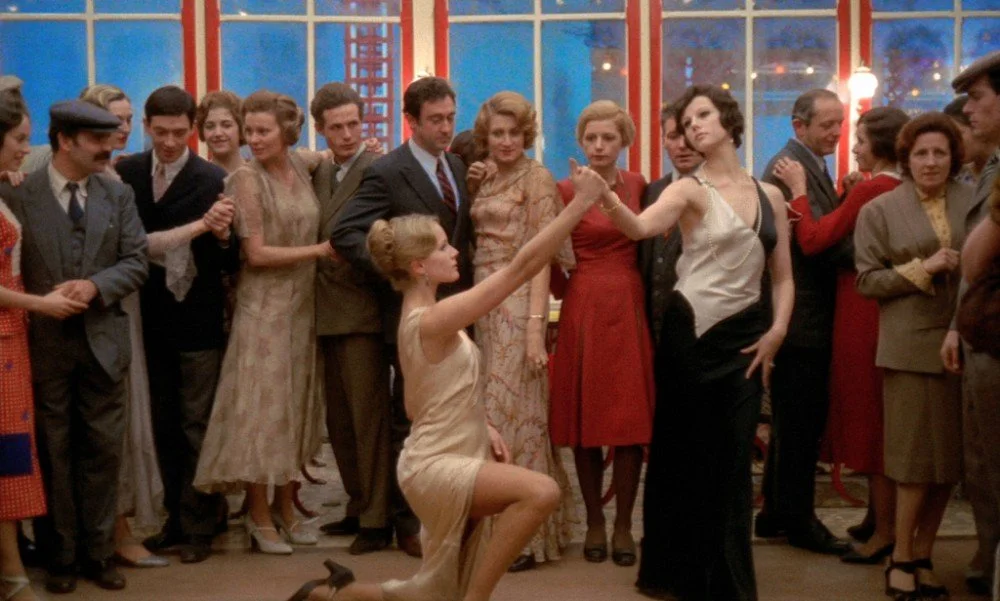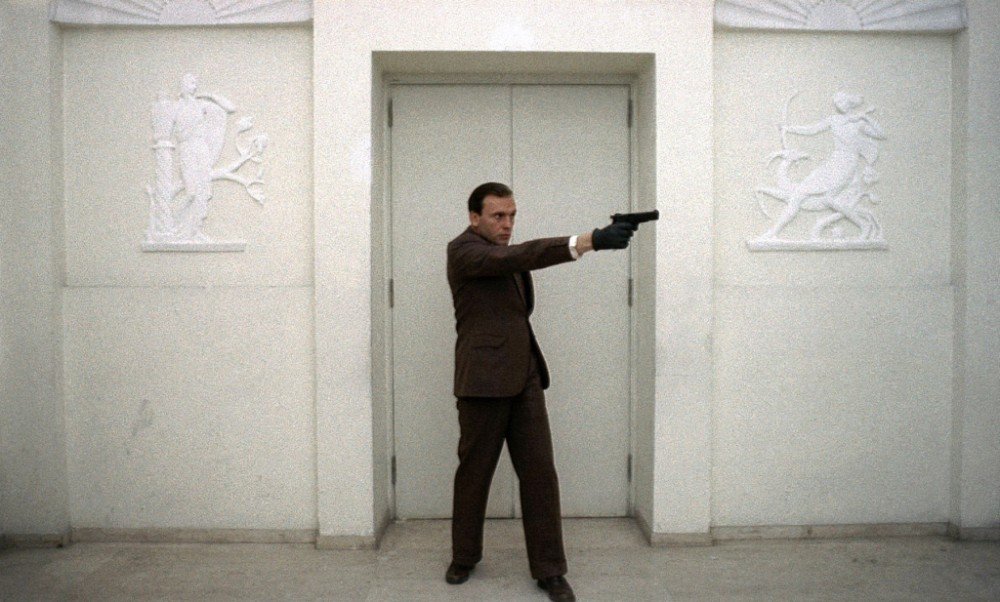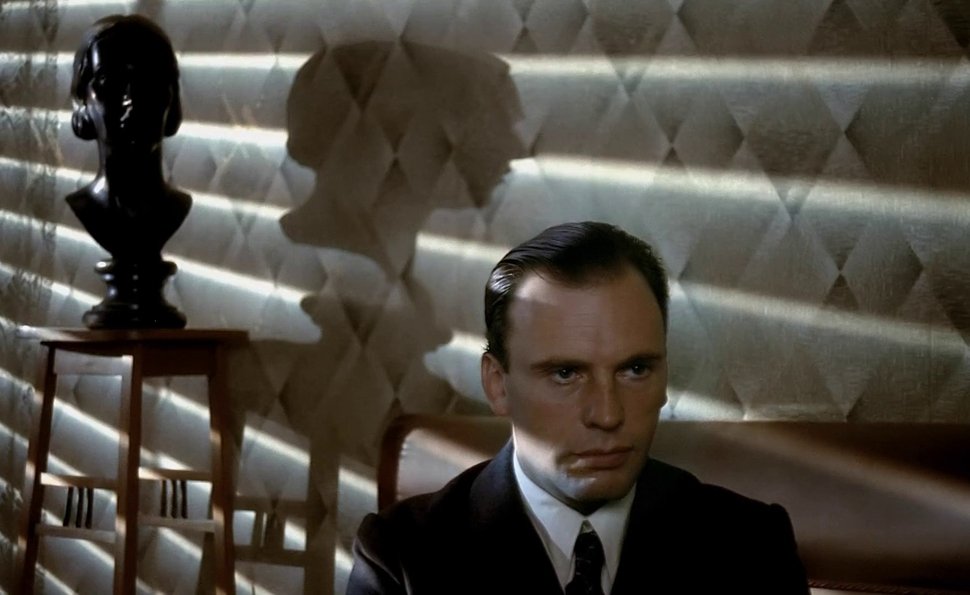THE CONFORMIST (Italy, 1970, Bernardo Bertolucci)
/“It’s a triumph of feeling and style…so operatic that you come away with sequences in your head like arias.” —Pauline Kael
Presented in this new 4K restoration by Minerva Pictures-Rarovideo USA and L’Immagine Ritrovata, Bernardo Bertolucci’s THE CONFORMIST (1970) is both a searing study of sexuality and politics set in 1930s Italy and a feat of opulent visual storytelling. Bertolucci combines a rich visual aesthetic with an emphasis on composition, design, and camerawork to craft a devastating portrait of the kind of personality that allows fascism to flourish. Widely considered Bertolucci's masterpiece, THE CONFORMIST was adapted from a novel of the same name by Alberto Moravia and boasts an authentic Art Deco look crafted by production designer Ferdinando Scarfiotti. The film also features a score by the acclaimed composer Georges Delerue.
In Mussolini's Italy, Marcello Clerici (played by Jean-Louis Trintignant) tries to purge memories of a youthful, homosexual episode — and murder — by joining the Fascists in a desperate attempt to fit in. Marcello spends much of the film being followed by fascist henchmen who are shadowing him to ensure he carries out his orders. To capture Marcello’s slowly building sense of being trapped in an inescapable situation — as well as the invasive, subtly Orwellian atmosphere of fascist life — cinematographer Vittorio Storaro employs a breathtaking color palette and a wealth of variegated and disorienting camera techniques.
THE CONFORMIST unfolds as a series of flashbacks and flashbacks-within-flashbacks in service of a twisty plot with a distinctly noir flavor. The sheer extravagance of the film’s visual design — expressive lighting, lavish decor, sumptuous costumes, and elaborate tracking shots — evokes the classic Hollywood studio cinema of Josef Von Sternberg, Max Ophüls, and Orson Welles. Moreover, the camerawork calls attention to itself in the French New Wave tradition (ALPHAVILLE): low angles rising to confront or trail after characters, as if the camera has been lying in wait; tracking shots that seem to follow the action from a surreptitious distance; and oblique POVs that indicate both the main character’s completely askew moral compass and the increasingly distorted society in which he finds himself.
Bertolucci drew heavily on German Expressionism (THE LAST LAUGH) with its exaggerated and distorted shapes. He also invokes the deep shadows and stark contrasts of classic film noir (TRAPPED). Storaro and Scarfiotti (both longtime collaborators with Bertolucci) also turned to the 16th century artist Caravaggio as an inspiation — specifically, his famous use of dramatic, high-contrast lighting.
The production design uses a wealth of real Italian Fascist architecture and saturated hues. Scarfiotti’s palette frequently shifts from fully washed-out neutrals to vibrant, almost garish primary colors. Nearly every scene features an extremely regimented composition. For instance, in many shots characters are framed in the center of a vast, looming environment that threatens to engulf them. The mise-en-scène deploys heavy contrasts of darkness and light to indicate Marcello’s internal war with himself, and the depth of his conscious and unconscious desires. Using shadows, bars, and the camera as a kind of surveillance device, Bertolucci and Storaro turn their filmic canvas into a prison, visually engulfing and ensnaring Marcello — and the viewer — within the increasingly distorted horror that his reality has become.
The film’s style is symbolic of Fascism’s rise and fall. Just as Marcello’s attempts to order his life according to society’s harsh rules leads to his eventual psychic disintegration, so too do Fascism’s attempts at regimentation and authoritarianism lead to anarchy and chaos. The earlier parts of the film — full of the clean, imposing spaces of Mussolini’s Italy — are directed with an orderly aesthetic: symmetrical compositions, lateral and precise tracking shots, and tight, controlled movements by the actors (particularly Trintignant). As the film progresses, Bertolucci and Storaro’s compositions lose their regimentation and become increasingly loose and abstracted.
The later parts of THE CONFORMIST are draped in shadows or shot through with unflatteringly harsh lights, thereby creating a unique sense of violent social turmoil. The scene where the Professor and his wife are murdered is full of handheld camerawork and jump cuts. The finale of the film — set in a dark corner of the Colosseum on the night of Il Duce’s fall and replete with distracting searchlights and other strange effects — is a far cry from the cleanly-lit and orderly spaces of the earlier scenes. The mixture of homosexual and heterosexual hustlers (among them the gay chauffeur Marcello thought he had killed as a child), the disorderly political protesters, and the collapsing symbols of fascism’s fall, all create the sense that the protagonist has wound up in a world where everything he sought to suppress has come out of hiding and into full view.
Bertolucci filmed in a building with ties to the Fascist regime. One scene in the film — wherein Marcello visits his ill father — takes place at the Palazzo dei Congressi. The building’s sharp outlines, clean shapes, and attention to detail make it a significant example of rationalist architecture. Bertolucci’s use of this space draws parallels to the political ideology at the time, which emphasized brutalism and architectural monumentality. Storaro photographs this scene by closing the camera aperture and achieving deep focus, thereby providing his images with a larger depth of field.
The Palazzo dei Congressi is located in the EUR district, a residential and business district in Rome. Benito Mussolini created the district in the late 1930s for the Esposizione Universale Roma, a World’s Fair that would be held in 1942 to celebrate 20 years of fascism. This Fair was also a way of directing the expansion of the city towards the southwest with the intentions of forming a new metropolitan center in Rome. The start of World War II and Italy’s involvement in the war, however, canceled the original plans for the exposition. As a result, the EUR district was never finished and the Palazzo dei Congressi was completed nearly two decades later. The desolate area is now seen as a failure on a massive scale.
THE CONFORMIST
(US, 1970)
Director: Bernardo Bertolucci
Screenwriter: Bernardo Bertolucci
Cinematography: Vittorio Storaro
Cast: Jean-Louis Trintignant, Stefania Sandrelli, Gastone Moschin
- 108 minutes
- 35mm
- Color
- Sound
Distribution Format/s: DSL/Downloadable 1080p .mp4 file on server
Published By: Kino Lorber
Institutional Price: $500
To order call: 212.280.8654 or click here for information on ordering by fax, e-mail or post.







